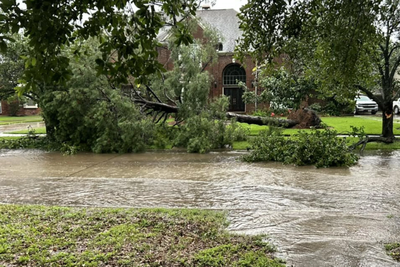guest column
Op-Ed: To protect the Texas grid, help Texans protect themselves

This latest incident is more than a sign that Houstonians must take control of their power. Photo by Eric Turnquist
On the evening of May 16, a devastating “derecho” storm howled through Houston. Nearly 800,000 customers lost power. Many were still without electricity days later, as a heat wave baked neighborhoods that couldn’t power air conditioners.
It was yet another unwelcome reminder about the precariousness of the power grid.
These outages followed repeated grid warnings, conservation calls, and near-misses last summer and the summer before, as well as the catastrophic Winter Storm Uri freeze in February 2021.
The outages also preceded the increasingly extreme weather Texas faces and staggering growth on the ERCOT grid: after growing about 1 percent a year for 20 years, the power grid covering most of Texas may need to be 78 percent bigger by 2030.
So, this latest incident is more than a sign that Houstonians must take control of their power. It also shows that more and more, the state needs you to act.
Like any other market, a power grid runs on supply and demand. The supply of Texas energy is growing, which is great. At the same time, the economy is booming, leaving Texas setting demand records almost constantly. Generators can’t always keep up, especially when power plants break down or don’t produce electricity — there’s about an 18 percent chance that Texas will face at least one grid emergency this summer.
With odds like that, it’s no wonder that more and more Texans are finding ways to live more powerfully. Many are investing in solar panels and energy storage devices like Tesla Powerwalls.
These systems let families and business owners generate electricity during the day, store it, and use it later when there’s an emergency or just when power is scarce. They protect people from high bills and blackouts; it’s no coincidence that just since last month's storm, we've seen a five-fold increase in leads, reflecting a huge growth in interest in solar power. Further, since the storm, 90 percent of new Houston-area solar customers have bought backup battery systems, compared to 50 percent in 2024 and less than 25 percent in 2023.
That pattern has repeated across the country after severe weather events.
Homeowners and business owners can also slash their bills by weatherizing houses and buildings, the way power plants did after Uri. Advanced devices that help people automatically, and voluntarily, reduce electricity use when the grid is stretched would also help.
These improvements and investments would help more than just homeowners and business owners — they’d help the entire power grid. Every kilowatt that someone doesn’t need or can generate themselves frees up power for other families and businesses across the grid. That helps Texas keep the lights on, especially if electricity demand is about to spike as dramatically as the state expects.
Texas already incentivizes conservation and generation at a large scale. For example, large users like manufacturers and crypto miners get paid by ERCOT for reducing electricity use when the grid is stretched. And just last year, the legislature passed a $10 billion program to help fund new gas power plants.
It’s past time to extend similar incentives to everyday Texans, especially when we’re increasingly called upon to help ERCOT keep the lights on.
If crypto companies get money for reducing electricity use when ERCOT asks them to, then residential and business customers deserve to get paid too. The state could help Texans invest in technologies and smart metering programs that cut bills andautomatically reward people for reducing use on the hottest afternoons and coldest mornings.
More than that, the state has got to do more to reward solar customers who generate electricity and return it to the grid when demand rises. These virtual power plants will increasingly provide vital power when the state badly needs it, and consumers need to be rewarded for it. (Fortunately, the state is looking at strategies to take better advantage of virtual power plants.)
Finally, if Texas is helping big generators build gas plants, it should figure out ways to help regular Texans install solar panels and battery storage units. Such systems obviously help protect Texans from power outages, but they also fortify the ERCOT grid by reducing the demand on it.
Last month’s derecho was exactly the sort of freak occurrence that will become more common as the weather grows more extreme. The best way to protect the grid from such catastrophes is to protect individual Texas customers as well.———
Bret Biggart is CEO of Freedom Solar Power, a Texas-based solar company.